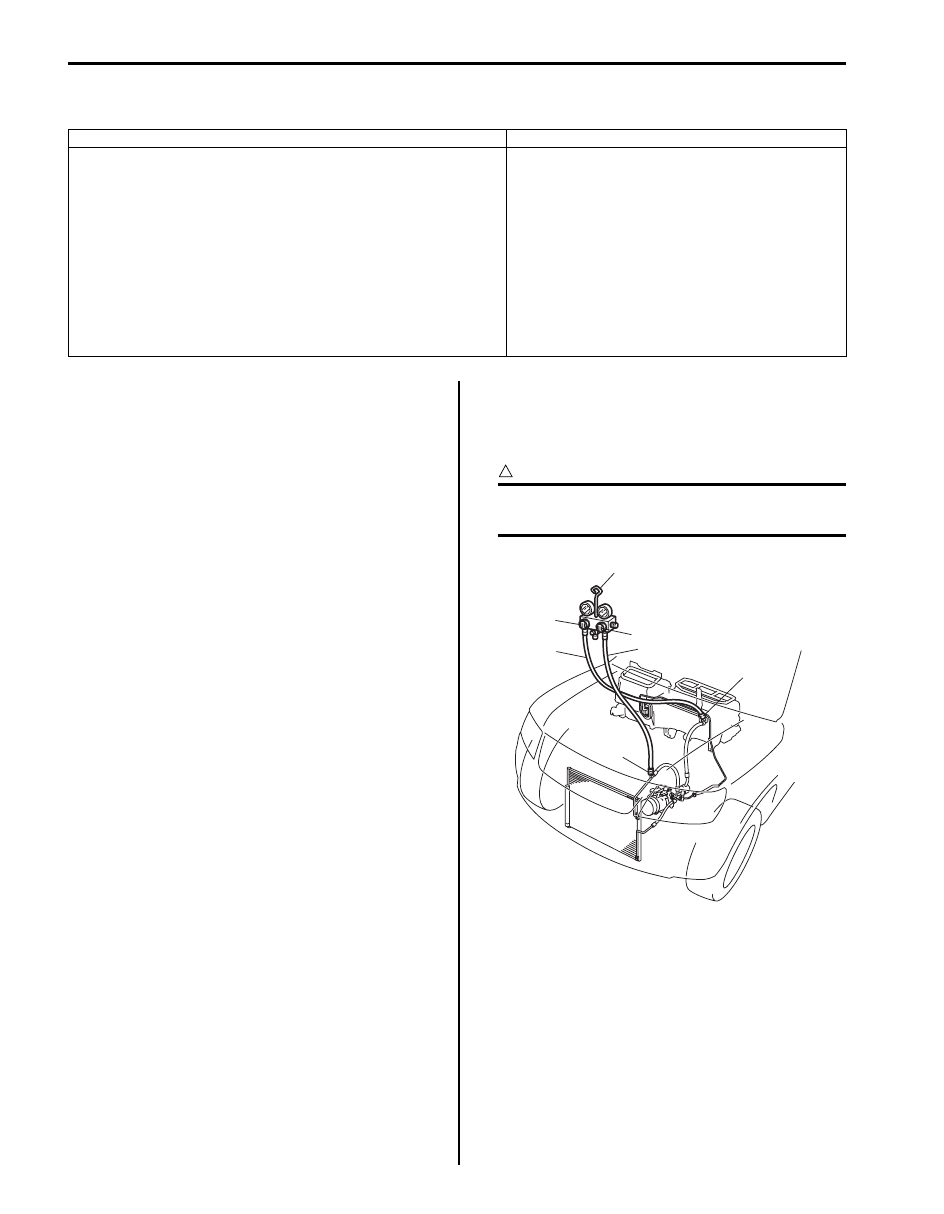Suzuki Grand Vitara JB627. Manual - part 276

7B-20 Air Conditioning System:
Visual Inspection
S6JB0B7204007
Visually check the following parts and systems.
A/C System Performance Inspection
S6JB0B7204008
1) Confirm that vehicle and environmental conditions
are as follows.
• Vehicle is put indoors.
• Ambient air temperature is within 15 – 35
°C (59 –
95
°F).
• Relative humidity is within 30 – 70%.
• There is no wind indoors.
• HVAC unit is normal condition.
• There is no air leakage from air ducts.
• Condenser fins are clean.
• Are filter is not clogged with dirt and dust.
• Battery voltage is 12 V or more.
• Radiator cooling fan operates normally.
2) Make sure that high pressure valve (1) and low
pressure valve (2) of manifold gauge (3) are firmly
closed.
3) Connect high pressure charging hose (4) to high
pressure service valve (5) on vehicle, and connect
low pressure charging hose (6) to low pressure
service valve (7) on vehicle.
4) Bleed the air in charging hoses by loosening their
respective nuts on manifold gauge, utilizing the
refrigerant pressure. When a hiss is heard,
immediately tighten nut.
CAUTION
!
Do not interchange high and low pressure
charging hoses by mistake.
Inspection Item
Correction
• Refrigerant ---- leakage and amount
• A/C pipe or hose ---- disconnection, looseness and
deterioration
• A/C compressor drive belt ---- looseness and damage
• Battery ---- fluid level and corrosion of terminal
• Connectors of electric wire harness ---- disconnection and
friction
• Fuses ---- burning
• Parts ---- installation and damage
• Other parts that can be checked visually
Refer to “A/C Compressor Drive Belt Inspection
and Adjustment”.
3
7
4
1
2
6
5
I5JB0A720010-01